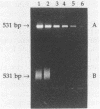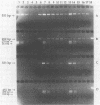Abstract
The polymerase chain reaction based on the selective amplification of a 531-bp fragment of the gene encoding the proline-rich antigen of Mycobacterium leprae was applied to nasal swab specimens from leprosy patients, occupational contacts, and endemic and nonendemic controls. To prevent false-positive amplification, we used dUTP and uracil-DNA-glycosylase in all polymerase chain reactions. False-negative reactions were detected by using a 531-bp modified template as an internal control. Amplification products were found in 55% of untreated patients, in 19% of the occupational contacts, in 12% of endemic controls, and in none of the nonendemic controls. This study strongly suggests that not only leprosy patients but also healthy persons may carry M. leprae. We concluded that polymerase chain reaction is a reliable method to detect M. leprae in nasal specimens. The method holds promise for studying the spread and transmission of M. leprae within a population.
Full text
PDF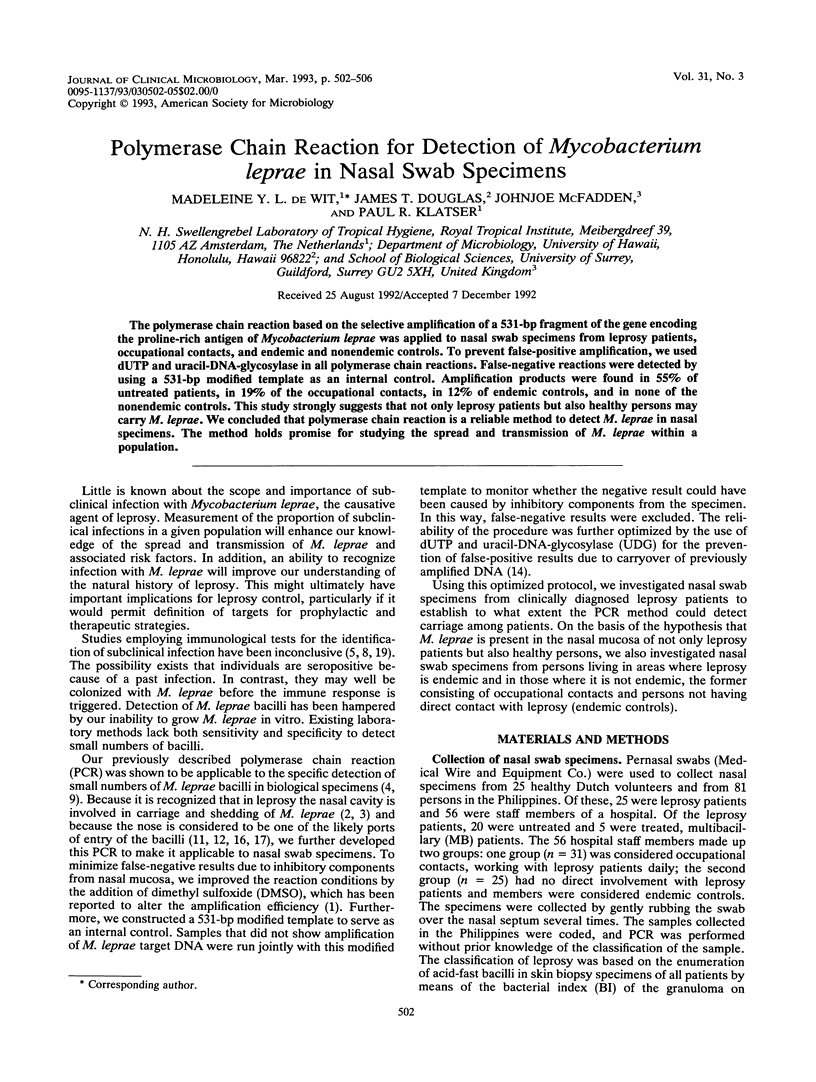
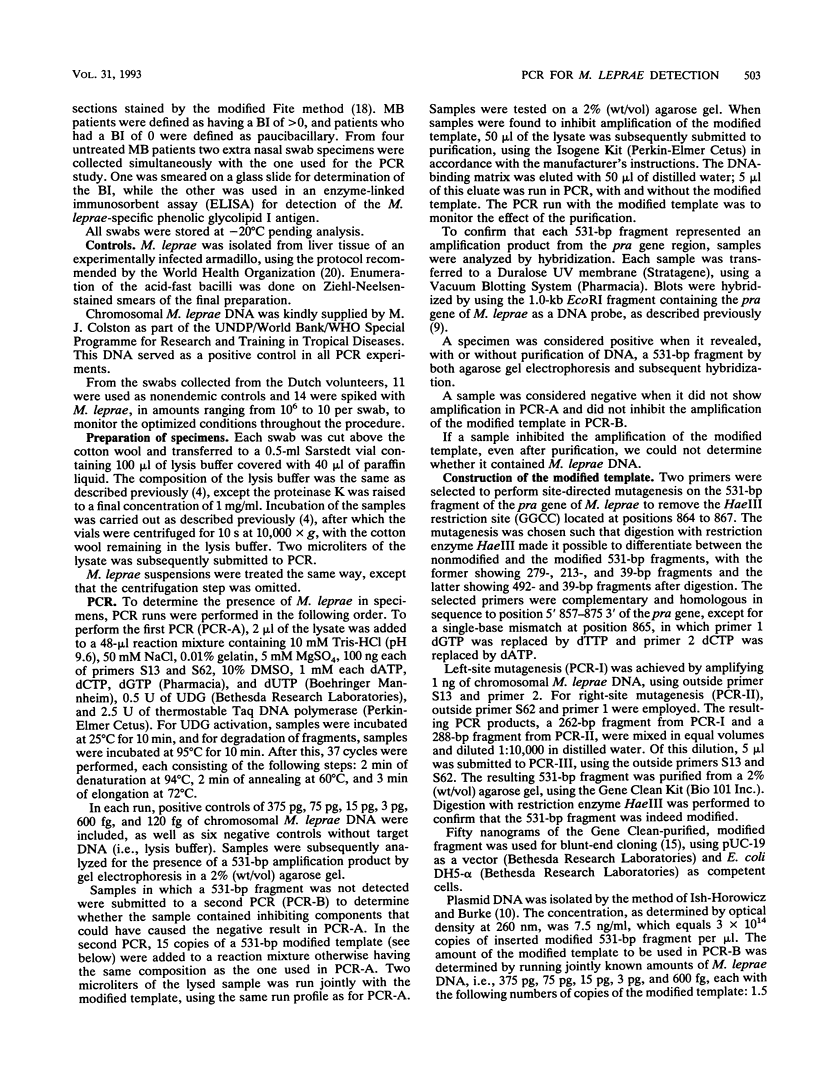
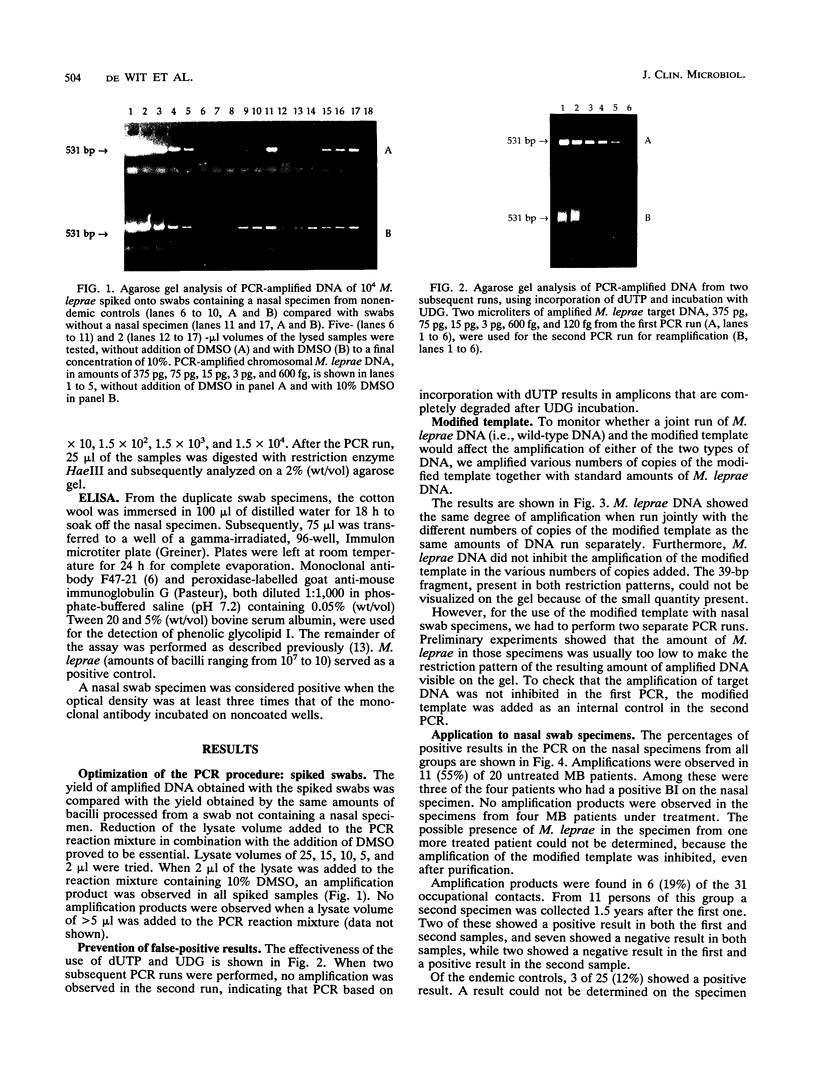

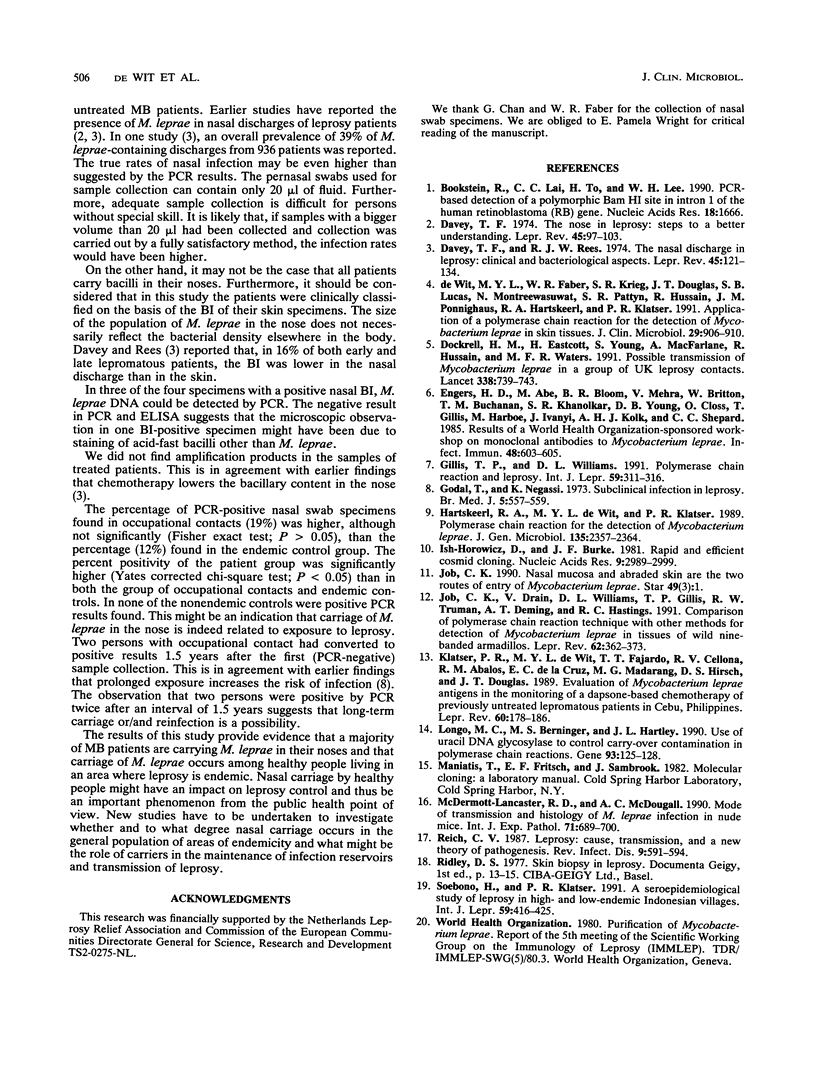
Images in this article
Selected References
These references are in PubMed. This may not be the complete list of references from this article.
- Bookstein R., Lai C. C., To H., Lee W. H. PCR-based detection of a polymorphic BamHI site in intron 1 of the human retinoblastoma (RB) gene. Nucleic Acids Res. 1990 Mar 25;18(6):1666–1666. doi: 10.1093/nar/18.6.1666. [DOI] [PMC free article] [PubMed] [Google Scholar]
- Davey T. F., Rees R. J. The nasal dicharge in leprosy: clinical and bacteriological aspects. Lepr Rev. 1974 Jun;45(2):121–134. doi: 10.5935/0305-7518.19740014. [DOI] [PubMed] [Google Scholar]
- Davey T. F. The nose in leprosy: steps to a better understanding. Lepr Rev. 1974 Jun;45(2):97–103. doi: 10.5935/0305-7518.19740011. [DOI] [PubMed] [Google Scholar]
- Dockrell H. M., Eastcott H., Young S., MacFarlane A., Hussain R., Waters M. F. Possible transmission of Mycobacterium leprae in a group of UK leprosy contacts. Lancet. 1991 Sep 21;338(8769):739–743. doi: 10.1016/0140-6736(91)91454-3. [DOI] [PubMed] [Google Scholar]
- Gillis T. P., Williams D. L. Polymerase chain reaction and leprosy. Int J Lepr Other Mycobact Dis. 1991 Jun;59(2):311–316. [PubMed] [Google Scholar]
- Godal T., Negassi K. Subclinical infection in leprosy. Br Med J. 1973 Sep 15;3(5880):557–559. doi: 10.1136/bmj.3.5880.557. [DOI] [PMC free article] [PubMed] [Google Scholar]
- Hartskeerl R. A., de Wit M. Y., Klatser P. R. Polymerase chain reaction for the detection of Mycobacterium leprae. J Gen Microbiol. 1989 Sep;135(9):2357–2364. doi: 10.1099/00221287-135-9-2357. [DOI] [PubMed] [Google Scholar]
- Ish-Horowicz D., Burke J. F. Rapid and efficient cosmid cloning. Nucleic Acids Res. 1981 Jul 10;9(13):2989–2998. doi: 10.1093/nar/9.13.2989. [DOI] [PMC free article] [PubMed] [Google Scholar]
- Job C. K., Drain V., Williams D. L., Gillis T. P., Truman R. W., Sanchez R. M., Deming A. T., Hastings R. C. Comparison of polymerase chain reaction technique with other methods for detection of Mycobacterium leprae in tissues of wild nine-banded armadillos. Lepr Rev. 1991 Dec;62(4):362–373. doi: 10.5935/0305-7518.19910042. [DOI] [PubMed] [Google Scholar]
- Klatser P. R., de Wit M. Y., Fajardo T. T., Cellona R. V., Abalos R. M., de la Cruz E. C., Madarang M. G., Hirsch D. S., Douglas J. T. Evaluation of Mycobacterium leprae antigens in the monitoring of a dapsone-based chemotherapy of previously untreated lepromatous patients in Cebu, Philippines. Lepr Rev. 1989 Sep;60(3):178–186. doi: 10.5935/0305-7518.19890023. [DOI] [PubMed] [Google Scholar]
- Longo M. C., Berninger M. S., Hartley J. L. Use of uracil DNA glycosylase to control carry-over contamination in polymerase chain reactions. Gene. 1990 Sep 1;93(1):125–128. doi: 10.1016/0378-1119(90)90145-h. [DOI] [PubMed] [Google Scholar]
- McDermott-Lancaster R. D., McDougall A. C. Mode of transmission and histology of M. leprae infection in nude mice. Int J Exp Pathol. 1990 Oct;71(5):689–700. [PMC free article] [PubMed] [Google Scholar]
- Reich C. V. Leprosy: cause, transmission, and a new theory of pathogenesis. Rev Infect Dis. 1987 May-Jun;9(3):590–594. doi: 10.1093/clinids/9.3.590. [DOI] [PubMed] [Google Scholar]
- Results of a World Health Organization-sponsored workshop on monoclonal antibodies to Mycobacterium leprae. Infect Immun. 1985 May;48(2):603–605. doi: 10.1128/iai.48.2.603-605.1985. [DOI] [PMC free article] [PubMed] [Google Scholar]
- Soebono H., Klatser P. R. A seroepidemiological study of leprosy in high- and low-endemic Indonesian villages. Int J Lepr Other Mycobact Dis. 1991 Sep;59(3):416–425. [PubMed] [Google Scholar]
- de Wit M. Y., Faber W. R., Krieg S. R., Douglas J. T., Lucas S. B., Montreewasuwat N., Pattyn S. R., Hussain R., Ponnighaus J. M., Hartskeerl R. A. Application of a polymerase chain reaction for the detection of Mycobacterium leprae in skin tissues. J Clin Microbiol. 1991 May;29(5):906–910. doi: 10.1128/jcm.29.5.906-910.1991. [DOI] [PMC free article] [PubMed] [Google Scholar]



